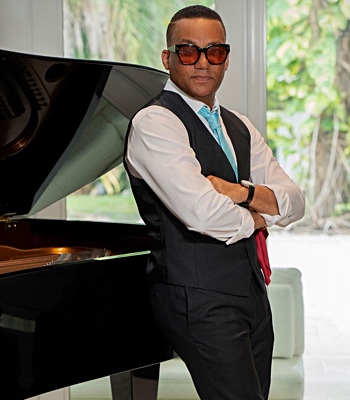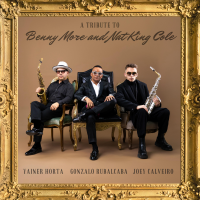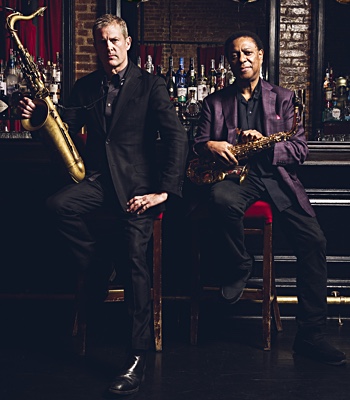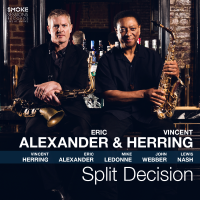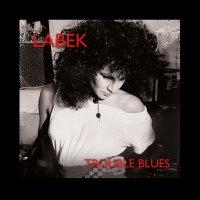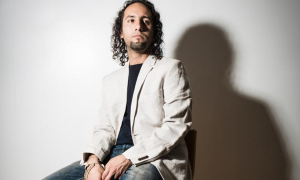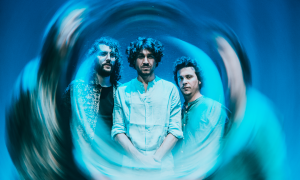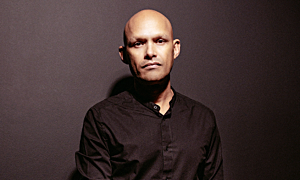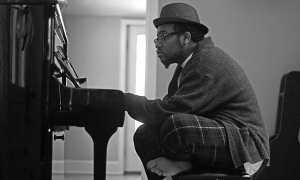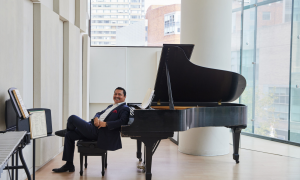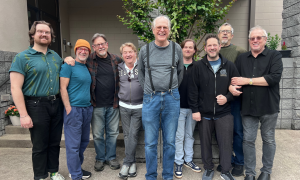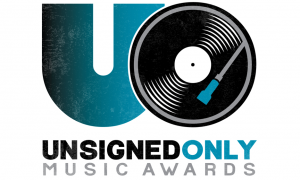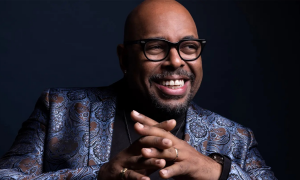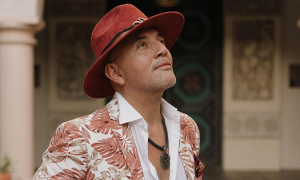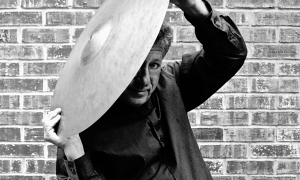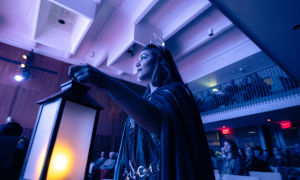By Bill King (Editor, Ejazznews.com)
As the descent began I scanned the countryside as far as the eye could distinguish seemingly lost in trance like meditation. I imagined what it was like the year 1511 when the Spaniards accidentally landed in Mexico stranded in a hurricane bound for Espanola.
Below a densely carpeted deciduous forest bound together by interlocking vines, trees and every imaginable tropical plant awaited my arrival. There were moments of panic as I amused myself with thoughts of being adrift in unfamiliar terrain lost afar in the darkest regions of a suffocating humid night. A land where the jaguar is king, the boa constrictor lies in waiting and the ground swells with nocturnal feasting.
12 to 15 centuries ago ancient cities flourished throughout the Maya World the states of Yucatan, Quintana Roo, Campeche, Chipas and Tabasco. Today, much of the countryside remains the same a broad jungle home to over 1,100 bird species the second biggest coral reef the Palancar reef, archeological vestiges of Maya culture cities under restoration; Chichen Itza, Uxmal, and Palenque.
In contemporary times the region has found favor with the world traveler and sunshine chasers. For some, the lure of history and adventure makes for a satisfying getaway. For the weary work-burdened vacationer its the large estates that trim the sea coast advertising luxury accommodations and grand hospitality that curry visitors.
For my ears it was the invitation to hear some of the top Mexican musicians at the sixth edition of the Riviera Maya Jazz Festival that intrigued. These are names few will recognize unless plugged into the global jazz scene.
The Riviera Maya is a forty-mile tourism district along a work-in- progress highway extending from Playa del Carmen to Tulum. The highway is a modern thoroughfare under construction.
Playa del Carmen is a resurrected fishing village of all-inclusive, villa rentals, restaurants, hotels, gift shops and other attractions with a populous of 100,000. What distinguishes Playa del Carmen from neighboring resort metropolis Cancun is its place in Mayan history.
The first account of visitors date back between 300 and 600 A.D. as journeyers chose the area as a rest stop as they made the trek between the great Mayan cities on their way to Cozumel.
Modern day Playa del Carmen still exudes the colors and brilliance of tradition yet offers travelers the comforts and youthful night life at a principled cost.
As with most Caribbean jazz festivals most are built around tourism. Those founded primarily as pure music forums have a dedicated following or have vanished due to competing entertainment interests.
Its still all about timing. North American jazz festivals run from April until October - their southern counterparts November to May.
The 2008 edition of The Riviera Maya Jazz Festival located at Mamitas Beach Club was timed to capitalize on the American Thanksgiving holiday.
Surprisingly, entering and exiting Mexico were the easiest travel procedures Ive endured in years. From custom officials to immigration ticket handlers to transportation everything was managed with courtesy and efficiency. Now, the jazz festival.
Few jazz festivals pay attention to the roots of jazz or those artists which best demonstrate tradition. The Riviera Maya Jazz Festival aligns itself with festival producer Fernando Toussaint's affection for fusion jazz a music more in tune with 1970s pop/jazz Frank Zappa, Weather Report and at times the power motives of Alan Holdsworth. This is understandable in a country that has long struggled with a music politicians and intellectuals called savage music.
Fusion is not exactly the most riveting music available yet it keeps audiences amused and in place. My hope was for more culturally interfaced sounds bridging the past with the present. Those moments were rare.
Day one, pianist Pepe Moran led off with a loosely constructed set of pop jazz that was neither memorable nor proficient enough to garner opening status. Fortunately, this would be the only ensemble that seemed absent focus.
Sisters Ingrid and Jennifer Beaujean followed under the banner The Beaujean Project. The twenty-two year old vocalists display a cool detached singing style at times as if pop jazz singer Sade surfaced in duplicate. There's a breezy flow to the material and light fanciful choreography between the women that never appears rehearsed or contrived. During solos both found themselves adrift in improvisation waving arms and swaying to Brazilian rhythms.
Sister Ingrid was able to sustain herself during her best singing moment as she explored her full vocal range. There's a sweet soulfulness in the upper register and ease when improvising through some of the more complex harmonic passages that made her a festival stand out.
Aguamaca is one of two bands connected to festival producer and drummer Fernando Toussaint with Enrique Pat in the keyboard chair, Bernardo Ron guitar and Luis Ernesto bass. Of the two units this was the most predictable.
As the world of music moves towards diversity Aquamaca stays grounded in progressive rock/jazz - a dinosaur long extinguished. This doesn't discount the passion and devotion but it does leave one feeling as if everything played has been recycled in every basement and club from here to Melbourne half a lifetime ago. Its raw, intense and a hundred per cent male testosterone. Songs go the distance. Everyone solos and has a grand time.
Perhaps the real deal of the whole festival was pianist Hector Infanzon and his quartet. This was music of great brilliance counter rhythms sophisticated harmonies group dynamics--melodies that soared and improvisation that spread in all directions far across the night sea.
Infanzon captures so much of Latin America in his music. There are those lovely Spanish themes that caress the heart which seem for a fleeting moment to beg permanence. There are also interconnecting lines either played in unison with bass or drums that bridge the various motifs and sub themes, that enthrall. This is music one has to still themselves to absorb the impact. Bravo!
Singer Iraida Noriega studied in New York under Sheila Jordan and it shows in presentation. Noriega was joined on stage with pianist Nicolas Santella, Israel Cupich double bass, Tavo Nansayapa drums and Miguel A;cerrerca vibes.
Noriega plays in the zone inhabited by Jordan, Norma Winstone, Flora Purim and a few others. There was a moment I thought Id possibly include the late Betty Carter in this group.
Much like the Beaujean Project Noriega courts Brazilian coolness. While she chooses to imitate horn players deep in improvisation--that's where her limitations arrive to battle. Its like a conversation that keeps repeating but never ends. When Dianne Reeves and Dee De Bridgewater improvise the notes blend and push the song along. Its about range and imagination.
Noriega found herself in a memorable duet with guitarist Earl Klugh. Her voice penetrated and carried above all that was below. It was also Klugh's finest moment.
Earl Klugh. What can be said about the light-jazz icon. Klugh managed to digest all of the goodwill Wes Montgomery left behind and turn it into a commodity. I cant say I remember a song or a melody.
Klugh has made a sound living based around scraps of melodies. These are mostly short motifs regurgitated time and again to suit a particular rhythm. One day the repetitive idea is played as a samba the next a California drive up the Pacific Coast highway light and sunny. Nonetheless Klugh has fans. The fans on this occasion remained in close conversation with those around until the last number then abruptly cheered.
David Sanborn is truly a giant. He has his detractors but the facts are the guy can play his bottom off and always thinks his way through recordings. There are no diluted melodies or surplus showy moments--just the groove great hooks and splendid solos.
There were several standout moments--two being Sanborn classics Chicago Song and Maputo. Its all in the details.
Sanborn keeps the soloing in balance. There are ample counterpoint lines and connecting sections that make each song complete. The arrangements are seamless making the solos seem more to the point.
There was no argument Sanborn took top honors in the international category.
Billy Cobham? What can be said about the sixty-four year old Panamanian drummer that hasnt been recited on numerous occasions? Hes the Godfather of fusion/jazz drumming. He also appears as muscular and fit as in his early years with Mahavishnu Orchestra.
For his part, Cobham gave the crowd what it wanted extremely loud guitar hammering rock/jazz. As far as keeping up with the times Cobham loses out to drummers like Dave Weckl. Weckl absorbed the crunching extravagances of early fusion and shifted gears. Instead of pouncing on every beat Weckl broke those beats apart and found a useful marriage between funk, jazz, world beats and beyond.
Luca Littera & Sacbe. This performance is another highlight of the festival featuring producer/ drummer Fernando Toussaint along with brothers Eugenio (piano) and Enrigue (electric bass). The magic came with the inclusion of Italian born harmonica player Luca Littera.
This was gorgeous music with broad sweeping melodies and grand interludes. This was also a smart blend of African, Asian, Brazilian, Mexican and American jazz and world rhythms. In contemporary terms this is what today's fusion is all about--cultures that intersect and bleed into one another.
Luca Littera has harvested the inner passion and technique and a universal bond between brothers in trade Toots Thielemans, Hendrik Meurkens, Bruno De Filippi and Mauricio Einhorn. Time again he lifted the ensemble each time he brought the instrument to his mouth. It was jazz as it should be played effortlessly without intimidation the universal language of communication and shared invention.
As for show closers Fourplay?
After discussing how liberal their views had changed on video-taping and photographing performances during an earlier press conference the band issued a proclamation to the press no photos no video. Hummmm... Have a look at You Tube and see what was caught beyond the press's reach. You may beg for us to lift our lens next occasion.
As the descent began I scanned the countryside as far as the eye could distinguish seemingly lost in trance like meditation. I imagined what it was like the year 1511 when the Spaniards accidentally landed in Mexico stranded in a hurricane bound for Espanola.
Below a densely carpeted deciduous forest bound together by interlocking vines, trees and every imaginable tropical plant awaited my arrival. There were moments of panic as I amused myself with thoughts of being adrift in unfamiliar terrain lost afar in the darkest regions of a suffocating humid night. A land where the jaguar is king, the boa constrictor lies in waiting and the ground swells with nocturnal feasting.
12 to 15 centuries ago ancient cities flourished throughout the Maya World the states of Yucatan, Quintana Roo, Campeche, Chipas and Tabasco. Today, much of the countryside remains the same a broad jungle home to over 1,100 bird species the second biggest coral reef the Palancar reef, archeological vestiges of Maya culture cities under restoration; Chichen Itza, Uxmal, and Palenque.
In contemporary times the region has found favor with the world traveler and sunshine chasers. For some, the lure of history and adventure makes for a satisfying getaway. For the weary work-burdened vacationer its the large estates that trim the sea coast advertising luxury accommodations and grand hospitality that curry visitors.
For my ears it was the invitation to hear some of the top Mexican musicians at the sixth edition of the Riviera Maya Jazz Festival that intrigued. These are names few will recognize unless plugged into the global jazz scene.
The Riviera Maya is a forty-mile tourism district along a work-in- progress highway extending from Playa del Carmen to Tulum. The highway is a modern thoroughfare under construction.
Playa del Carmen is a resurrected fishing village of all-inclusive, villa rentals, restaurants, hotels, gift shops and other attractions with a populous of 100,000. What distinguishes Playa del Carmen from neighboring resort metropolis Cancun is its place in Mayan history.
The first account of visitors date back between 300 and 600 A.D. as journeyers chose the area as a rest stop as they made the trek between the great Mayan cities on their way to Cozumel.
Modern day Playa del Carmen still exudes the colors and brilliance of tradition yet offers travelers the comforts and youthful night life at a principled cost.
As with most Caribbean jazz festivals most are built around tourism. Those founded primarily as pure music forums have a dedicated following or have vanished due to competing entertainment interests.
Its still all about timing. North American jazz festivals run from April until October - their southern counterparts November to May.
The 2008 edition of The Riviera Maya Jazz Festival located at Mamitas Beach Club was timed to capitalize on the American Thanksgiving holiday.
Surprisingly, entering and exiting Mexico were the easiest travel procedures Ive endured in years. From custom officials to immigration ticket handlers to transportation everything was managed with courtesy and efficiency. Now, the jazz festival.
Few jazz festivals pay attention to the roots of jazz or those artists which best demonstrate tradition. The Riviera Maya Jazz Festival aligns itself with festival producer Fernando Toussaint's affection for fusion jazz a music more in tune with 1970s pop/jazz Frank Zappa, Weather Report and at times the power motives of Alan Holdsworth. This is understandable in a country that has long struggled with a music politicians and intellectuals called savage music.
Fusion is not exactly the most riveting music available yet it keeps audiences amused and in place. My hope was for more culturally interfaced sounds bridging the past with the present. Those moments were rare.
Day one, pianist Pepe Moran led off with a loosely constructed set of pop jazz that was neither memorable nor proficient enough to garner opening status. Fortunately, this would be the only ensemble that seemed absent focus.
Sisters Ingrid and Jennifer Beaujean followed under the banner The Beaujean Project. The twenty-two year old vocalists display a cool detached singing style at times as if pop jazz singer Sade surfaced in duplicate. There's a breezy flow to the material and light fanciful choreography between the women that never appears rehearsed or contrived. During solos both found themselves adrift in improvisation waving arms and swaying to Brazilian rhythms.
Sister Ingrid was able to sustain herself during her best singing moment as she explored her full vocal range. There's a sweet soulfulness in the upper register and ease when improvising through some of the more complex harmonic passages that made her a festival stand out.
Aguamaca is one of two bands connected to festival producer and drummer Fernando Toussaint with Enrique Pat in the keyboard chair, Bernardo Ron guitar and Luis Ernesto bass. Of the two units this was the most predictable.
As the world of music moves towards diversity Aquamaca stays grounded in progressive rock/jazz - a dinosaur long extinguished. This doesn't discount the passion and devotion but it does leave one feeling as if everything played has been recycled in every basement and club from here to Melbourne half a lifetime ago. Its raw, intense and a hundred per cent male testosterone. Songs go the distance. Everyone solos and has a grand time.
Perhaps the real deal of the whole festival was pianist Hector Infanzon and his quartet. This was music of great brilliance counter rhythms sophisticated harmonies group dynamics--melodies that soared and improvisation that spread in all directions far across the night sea.
Infanzon captures so much of Latin America in his music. There are those lovely Spanish themes that caress the heart which seem for a fleeting moment to beg permanence. There are also interconnecting lines either played in unison with bass or drums that bridge the various motifs and sub themes, that enthrall. This is music one has to still themselves to absorb the impact. Bravo!
Singer Iraida Noriega studied in New York under Sheila Jordan and it shows in presentation. Noriega was joined on stage with pianist Nicolas Santella, Israel Cupich double bass, Tavo Nansayapa drums and Miguel A;cerrerca vibes.
Noriega plays in the zone inhabited by Jordan, Norma Winstone, Flora Purim and a few others. There was a moment I thought Id possibly include the late Betty Carter in this group.
Much like the Beaujean Project Noriega courts Brazilian coolness. While she chooses to imitate horn players deep in improvisation--that's where her limitations arrive to battle. Its like a conversation that keeps repeating but never ends. When Dianne Reeves and Dee De Bridgewater improvise the notes blend and push the song along. Its about range and imagination.
Noriega found herself in a memorable duet with guitarist Earl Klugh. Her voice penetrated and carried above all that was below. It was also Klugh's finest moment.
Earl Klugh. What can be said about the light-jazz icon. Klugh managed to digest all of the goodwill Wes Montgomery left behind and turn it into a commodity. I cant say I remember a song or a melody.
Klugh has made a sound living based around scraps of melodies. These are mostly short motifs regurgitated time and again to suit a particular rhythm. One day the repetitive idea is played as a samba the next a California drive up the Pacific Coast highway light and sunny. Nonetheless Klugh has fans. The fans on this occasion remained in close conversation with those around until the last number then abruptly cheered.
David Sanborn is truly a giant. He has his detractors but the facts are the guy can play his bottom off and always thinks his way through recordings. There are no diluted melodies or surplus showy moments--just the groove great hooks and splendid solos.
There were several standout moments--two being Sanborn classics Chicago Song and Maputo. Its all in the details.
Sanborn keeps the soloing in balance. There are ample counterpoint lines and connecting sections that make each song complete. The arrangements are seamless making the solos seem more to the point.
There was no argument Sanborn took top honors in the international category.
Billy Cobham? What can be said about the sixty-four year old Panamanian drummer that hasnt been recited on numerous occasions? Hes the Godfather of fusion/jazz drumming. He also appears as muscular and fit as in his early years with Mahavishnu Orchestra.
For his part, Cobham gave the crowd what it wanted extremely loud guitar hammering rock/jazz. As far as keeping up with the times Cobham loses out to drummers like Dave Weckl. Weckl absorbed the crunching extravagances of early fusion and shifted gears. Instead of pouncing on every beat Weckl broke those beats apart and found a useful marriage between funk, jazz, world beats and beyond.
Luca Littera & Sacbe. This performance is another highlight of the festival featuring producer/ drummer Fernando Toussaint along with brothers Eugenio (piano) and Enrigue (electric bass). The magic came with the inclusion of Italian born harmonica player Luca Littera.
This was gorgeous music with broad sweeping melodies and grand interludes. This was also a smart blend of African, Asian, Brazilian, Mexican and American jazz and world rhythms. In contemporary terms this is what today's fusion is all about--cultures that intersect and bleed into one another.
Luca Littera has harvested the inner passion and technique and a universal bond between brothers in trade Toots Thielemans, Hendrik Meurkens, Bruno De Filippi and Mauricio Einhorn. Time again he lifted the ensemble each time he brought the instrument to his mouth. It was jazz as it should be played effortlessly without intimidation the universal language of communication and shared invention.
As for show closers Fourplay?
After discussing how liberal their views had changed on video-taping and photographing performances during an earlier press conference the band issued a proclamation to the press no photos no video. Hummmm... Have a look at You Tube and see what was caught beyond the press's reach. You may beg for us to lift our lens next occasion.
For more information contact All About Jazz.


